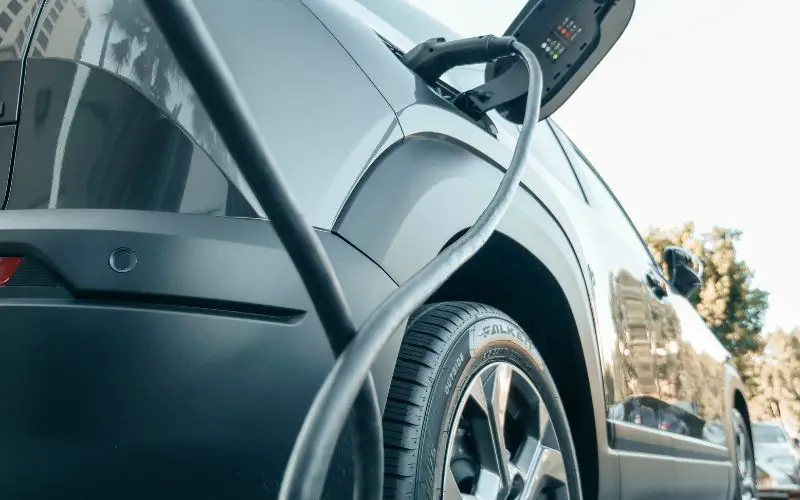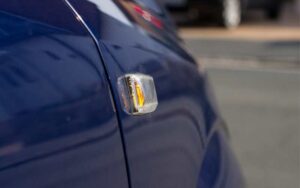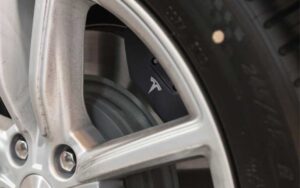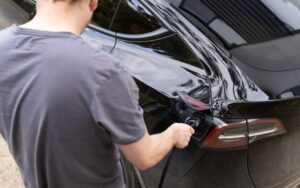Can You Turn Off Tesla Regenerative Braking? (Explained)
Last updated on April 18th, 2023 at 11:17 pm
Tesla’s regenerative braking system turns kinetic energy from driving downhill or from another source into electrical energy.
It typically accomplishes this by switching the electric motors from their regular direct drive mode to a generator mode, which makes them function as generators.
Even if it could offer a few benefits, most drivers prefer to operate their cars without them. Therefore, is it possible to disable Tesla’s regenerative braking?
Due to its connection to the accelerator pedal, Tesla’s regenerative braking cannot be disabled in models produced after 2020. It happens because the car uses regeneration to slow the automobile down when the accelerator pedal is in a position that requests a slower speed than the present speed.
We’ll look at how to turn off Tesla Regenerative Braking in this article if you don’t want to use it.
How To Turn Off Tesla Regenerative Braking (Step-by-Step)?

You can decrease the effectiveness of regenerative braking in your Tesla in several ways.
You could do this if your vehicle was manufactured before 2020, even though you cannot disable it.
These ways include;
#1. Pressing and Holding the Regen Button
The effectiveness of the regenerative brakes may be decreased by;
- Pressing and holding the regen button for two seconds. The regen button’s location is on the left-hand side of your steering wheel.
- You should get information confirming your action, enabling you to drive your car easily and without much effort.
#2. Putting Your Car In Low Mode
By switching your Tesla vehicle to Low Mode, you may also lessen the effectiveness of regenerative braking.
- Do this by tapping the “L” button on the center console.
- The system will stop being active, as shown by the regen braking indication on the instrument panel turning off.
- It will make regenerative braking less effective. While driving, though, your speed will be slower.
You can also put your car in low mode by;
- Tapping on the Controls on your center console.
- Select Pedals & Steering from the options displayed.
- Tap on Regenerative Braking next.
- Select Low mode from the low and standard options displayed.
#3. Reducing 50% Off the Regenerative Braking
Additionally, you may cut the effectiveness of the regen braking by 50%.
- On your center console, press the Regen button once.
- After tapping, a pop-up message should confirm and alert you that you have successfully reduced the regen braking in your car by 50%.
Should You Turn Off Tesla Regenerative Braking?
It is advisable that regenerative braking should generally be left running most of the time.
It increases Range and can facilitate smoother driving in stop-and-go traffic.
Regenerative braking works far more efficiently in stop-and-go congested traffic than highway commuting.
It should make sense because frequent braking will allow you to recover far more energy than long stretches of driving without using the brakes.
Terrain also significantly impacts here since uphill driving offers little opportunity for braking.
Yet, downward driving will recover energy considerably more quickly due to prolonged braking intervals.
According to Tesla, the car loses about 10–20% or more while turning its energy back into acceleration. The majority of its electric vehicles follow a fairly common design.
Remember that this 70% increase in Range does not imply that regenerative braking will result in a 70% increase in Range.
Your Range won’t increase from 100 miles to 170 miles. It only implies that a subsequent acceleration can recapture 70% of the kinetic energy lost during the braking process.
You may use regenerative braking almost continually to control speed while constantly charging the battery on lengthy downhills.
Since you will then need to use your brakes to slow down, it will cause them to wear out as in a regular automobile.
You would be squandering heat-related energy. Your Range may significantly diminish if you warm up your brakes rather than recharge the battery.
It’s crucial to understand that regenerative braking doesn’t magically increase the Range of electric vehicles.
Electric cars have become less inefficient but not necessarily more efficient.
The best way to operate any car would be to drive consistently and never use the brake pedal.
Your optimum Range would be reached by simply avoiding slowing down straight away, as braking would take energy away and force you to use more energy to accelerate again.
However, there could be occasions when you want to entirely turn it off, like descending a long, steep slope.
Here is a rundown of its pros and cons to help you better decide if you should turn off regenerative braking.
| Pros | Cons |
|---|---|
| Rotors and pads for brakes could last longer. | At slower speeds, it might not be as effective. |
| It gives your Tesla the potential for an extended range. | The sensation of your brake pedal can change. |
| Your car will have high energy conservation. | Your car won’t have as much stopping power. |
Do Newer Teslas Come With Regen?
Regenerative braking options are no longer available in newer Tesla models. There is now only one option for its regenerative braking technology.
Standard is now the sole regenerative braking level, replacing the low or standard options.
All Model S vehicles can no longer adjust regenerative braking to Low as of June 2020.
Standard mode is the more forceful regenerative braking option. You also have more options in this mode for how you want the regen to affect the car as a whole.
Creep, Roll, or Hold are the other three brake-related options. The first one will enable the vehicle to move ahead a small distance after you remove the brake.
Hold indicates that regenerative braking will bring you to a complete stop and maintain there, whereas Roll lets physics do most of the job.
Standard regenerative braking can be hazardous when driving on ice since it causes less traction loss and slide.
High degrees of regenerative braking can also make individuals queasy who aren’t familiar with how an electric car moves.
It is because it seems like someone is forcefully slamming on the brakes.
While most users won’t find this a significant difference, prospective purchasers generally won’t care either way and might opt for older Tesla models.
FAQs
#1. How Does Regenerative Braking Start Working?
Regenerative brakes frequently engage when you raise your foot from the accelerator pedal. Unlike Conventional brakes, which only do so when you press the brake pedal.
#2. How Much Does Regenerative Braking Add More Range?
Although regenerative braking often only extends your vehicle’s Range by 10-15% in cities and by a minimal amount on highways, it can increase it by up to 50% under ideal circumstances.
#3. When a Tesla Uses Regenerative Braking, Does the Brake Lights Power Up?
The brake lights come on to let other drivers know that you are slowing down if regenerative braking is slowing your Tesla.
Final Thoughts
It is impossible to turn off Tesla Regenerative braking completely. However, you can reduce the efficiency of your regenerative braking system by;
- Pressing and Holding the regen button.
- Putting your car in low mode.
- Reducing fifty percent of regenerative braking.
Regenerative braking should also always be enabled since it extends Range and makes driving in stop-and-go traffic easier.

Hey, I’m Michael Davis, a 35-year-old with a degree and a love for cars and tech. Since I was a kid, cars have been my thing—so much that I even thought they ran on magic beans! Fast forward, and I’ve built Vehicle Army, your one-stop-shop for easy-to-understand car facts.






